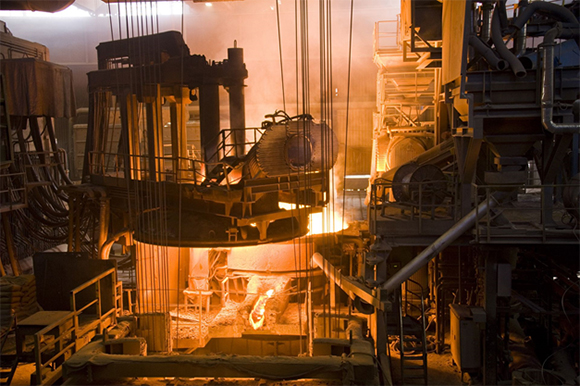| |

 |
ONLINE INSIDER
Martin Roche returned to his native land to smell the political mood in Scotland and ask what a newly independent Scotland might look like to mobile investors.
|
|
| FROM SITE SELECTION MAGAZINE JULY 2019 |
 |
FOOD & BEVERAGE
RAS aquaculture promises seafood for a hungry world. It also invites public scrutiny, as two projects in Maine illustrate.
|
|
 |
INVESTMENT PROFILE:
NANJING
Much of the future of China’s automotive industry already is in place in Nanjing.
|
|
| CONWAY ANALYTICS SNAPSHOT |
|
A new W.E. Upjohn Institute for Employment Research study of the Manufacturing Extension Partnership, or MEP, part of the National Institute of Standards and Technology, finds that the program generates an economic and financial return of more than 14:1 for the $140 million the federal government spends on it per year. The study is consistent with Upjohn Institute research finding that customized business services such as manufacturing extension can be 10 times as effective as tax incentives in creating local jobs.
The study found that MEP projects contributed to $4 billion of investment, creation of 26,486 new jobs and increased sales of $3.8 billion by participating companies, led by firms in fabricated metal products, transportation equipment, machinery and food & beverage products. Conway Analytics records show that those four NAICS categories are responsible for 3,621 corporate facility investment projects since spring 2015.
|
|
TURKEY
Iranian pharmaceutical manufacturer CinnaGen has recently opened a $100 million plant in northwestern Turkey. The plant is intended to manufacture “rare drugs,” which are expected to save Turkey $150 milllion in imports in the plant’s first year. The facility location will enable Turkey to significantly increase drug exports. The company has signed export-related agreements with Algeria, Bosnia-Herzegovina, Qatar, and Ecuador, and expects to have the capacity and demand to export to Europe in two years.
HUNGARY
Thyssenkrupp, a German industrial engineering and steel production multinational conglomerate, has recently announced that it will invest $57 million in a new auto components plan near Pécs, Hungary. The new plant is set to open by the end of 2020 and create over 200 jobs. The southwest Hungary location is intended to expand the company’s production and network outside of Germany. The new plant will be used to make valve train parts and electric motor components.
|
— Compiled by Olivia Vener, Consultant, Conway Advisory |
| SITE SELECTION RECOMMENDS |
|
As it approaches its 125th anniversary, the National Association of Manufacturers this week announced a member-driven campaign to raise at least $10 million for the newly established “Creators Wanted Fund” to inspire more Americans to pursue careers in modern manufacturing. The NAM will bring a “Creators Wanted” mobile tour of modern manufacturing to parents and students in 20 to 25 states over 18 weeks, unveil a year-long nationwide digital campaign to recruit new talent to the industry and host a culminating “Making America” Festival in Cincinnati, Ohio in September.
The campaign aims to cut the skills gap by 600,000 workers by 2025; increase by 25% the number of students enrolling in technical and vocational schools; increase by 25% the number of students enrolling in apprenticeships and reskilling programs; and raise to 50% — from 27% —the proportion of parents who would encourage their children to pursue a career in modern manufacturing. According to the NAM’s First Quarter Manufacturers’ Outlook Survey, more than 70% of manufacturers cite the inability to attract skilled workers as their top challenge.
|
|
 |
|
The Technology & Innovation issue of Site Selection features our annual Sustainability Rankings, as well as our features on Startup & Innovation Hubs; Smart Cities; Talent Attraction & Retention; and Research & Science Parks. See our exclusive coverage of the U.S.-Mexico border corridor; rural economic development, disruptive technology; food & beverage; data centers; aerospace workforce challenges; and cybersecurity, as well as the Dayton Intelligence Report and area reports from around the world and the nation.
|
|
 |
Event Staff Photographer Sebastijan Jug made this photo of the 1.25-megawatt main furnace used to melt steel in the Štore Steel factory in Teharje, Slovenia, 15 km. from his home. According to Štore Steel’s website, as a relatively small company in the Slovenian steel industry, most of the steel they produce is specially made for use in the automotive industry. Due to its size and specialty, Štore Steel is not a big name in the Slovenian steel industry, but it is big in the community. “[Štore Steel] is a company who gives jobs and food to many families around here,” says Sebastijan.
|
|
|
|

